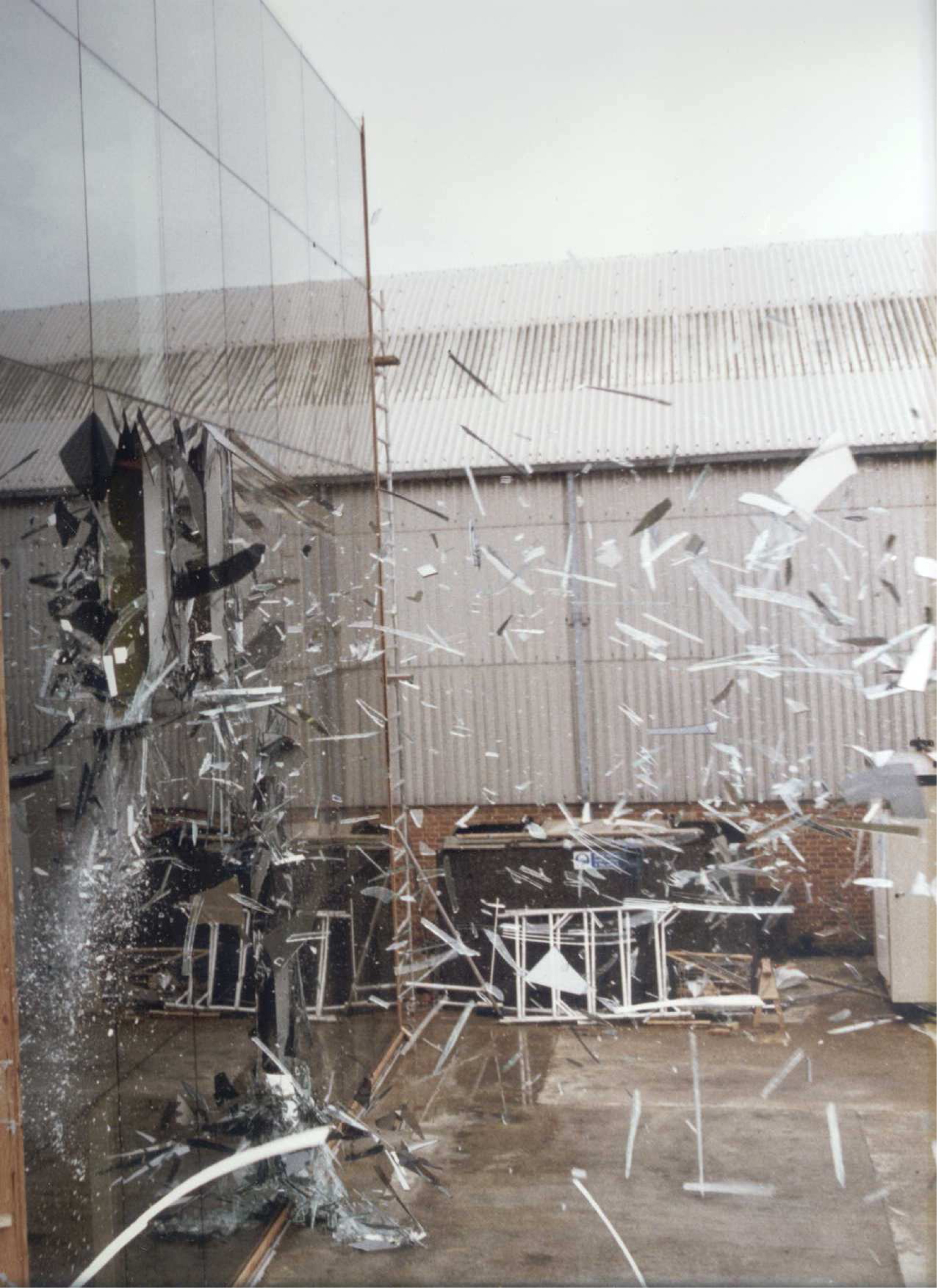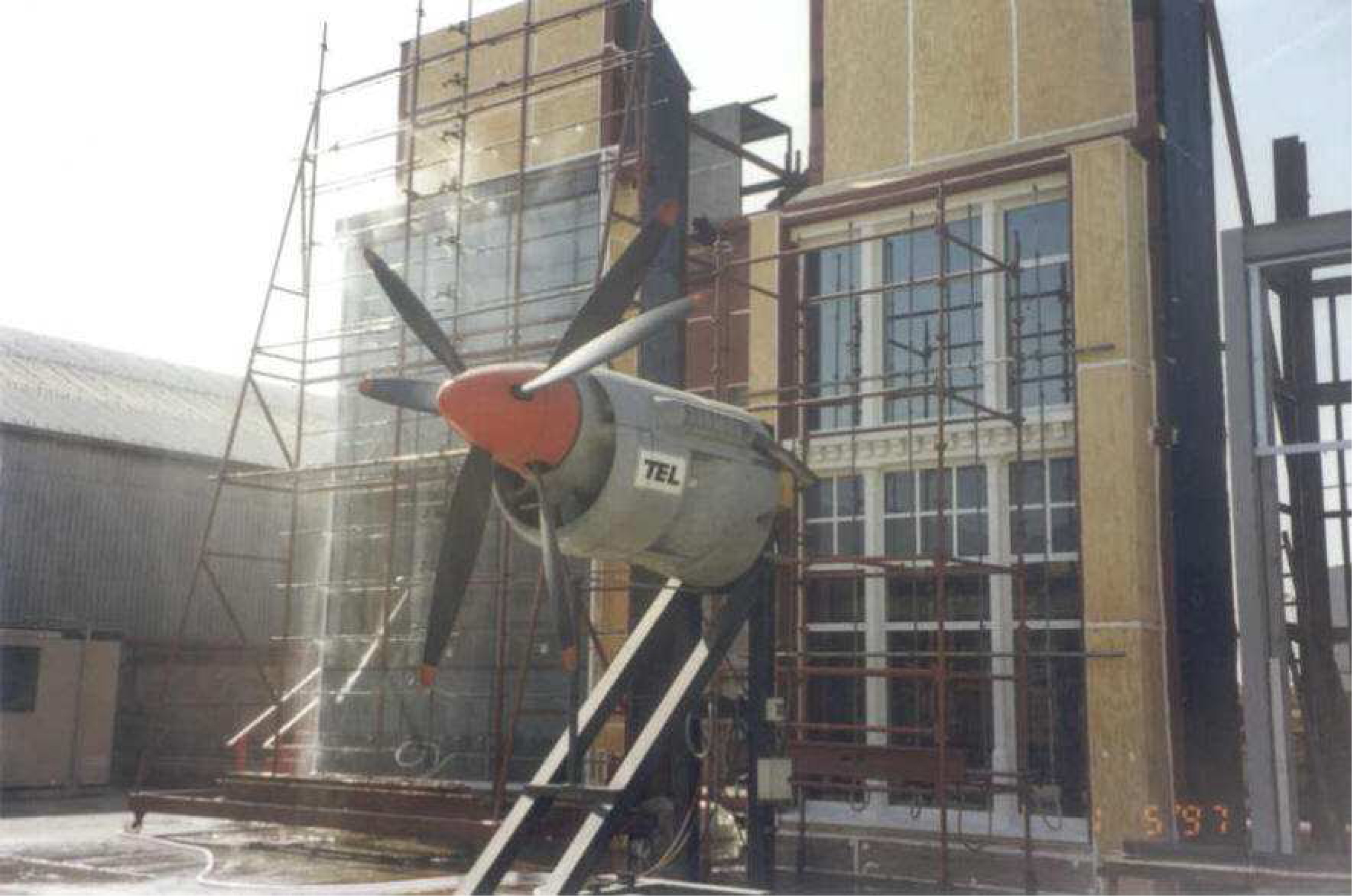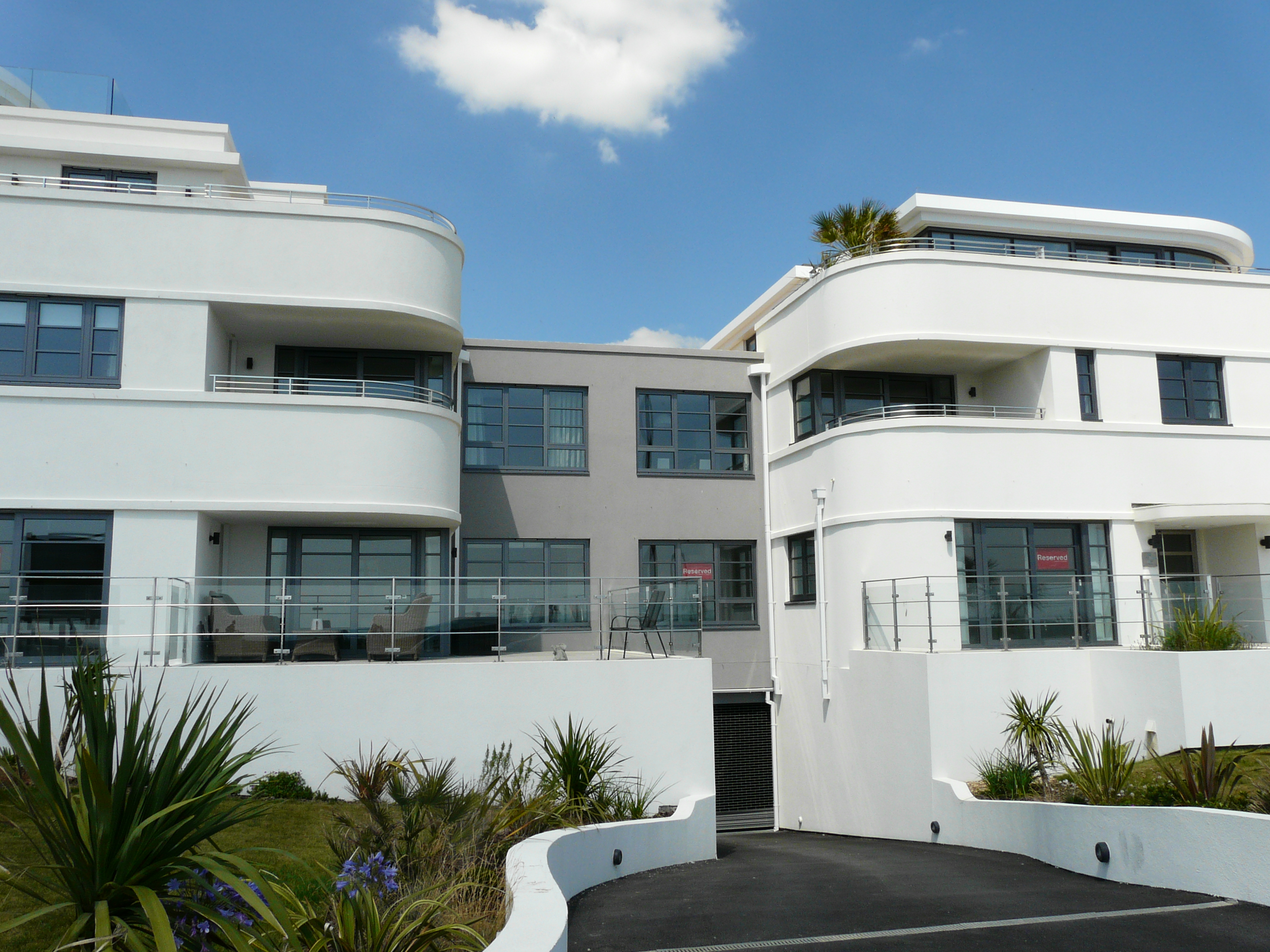Testing

We’ve spent so long witnessing façade testing...
...we could write a book about it
Professional Façade Testing Services in the UK, Europe, and Canada
We have witnessed tests throughout the UK, in mainland Europe and Canada. Over the years, we’ve accumulated what would amount to weeks, standing inside test chambers looking for signs of leakage. If leaks occur, we use our experience to figure out exactly why.
There is laboratory testing and site testing too. Used well, testing is a vital tool. Used badly, it can be a waste of time and money and a missed opportunity to understand a design and installation fully. This can result in design defects finding their way onto finished facades and costing thousands or even millions of pounds to rectify.

Laboratory Tests
Before manufacturing façades, laboratory testing is advisable. The façade sample is usually a full-scale mock-up, spanning two-stories or more. Usually, the mock-up will visually represent the façade materials proposed. The mock-up should also represent the materials and component spans in the finished building and include some of the more complicated detailing. Simulated building movements can also be achieved. The sample is typically exposed to simulated weather. Safety tests entail loading the sample, more than the design wind pressure to see how it reacts. This can cause materials and components to fail or, excessive framing deflections, or fixings to break. The point is to learn how the façade will look and work in service.
Laboratory testing offers the chance to address problems within the design. This means completing tests at the design stage; allowing time for changes to be made to the design if needed, before manufacture begins. Not allowing this time in the design schedule can result in a choice of a defective façade being ‘patched up’ or, the building project being significantly delayed so that defects can be properly rectified. Or worse still, replacing the cladding with another that works.

Testing on New Builds
Newly constructed buildings are usually subject to water testing, to check site workmanship, assuming the façade has already passed laboratory tests.
We also use other tests including thermography, air and acoustic testing.
